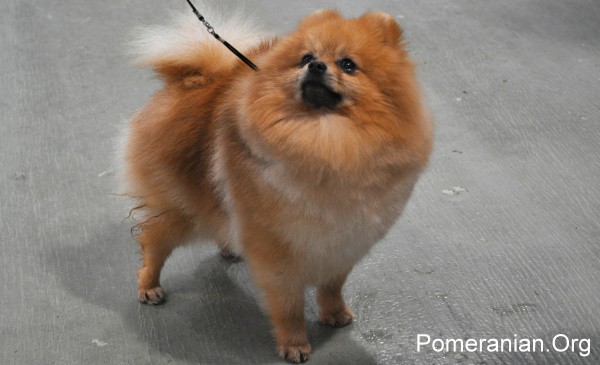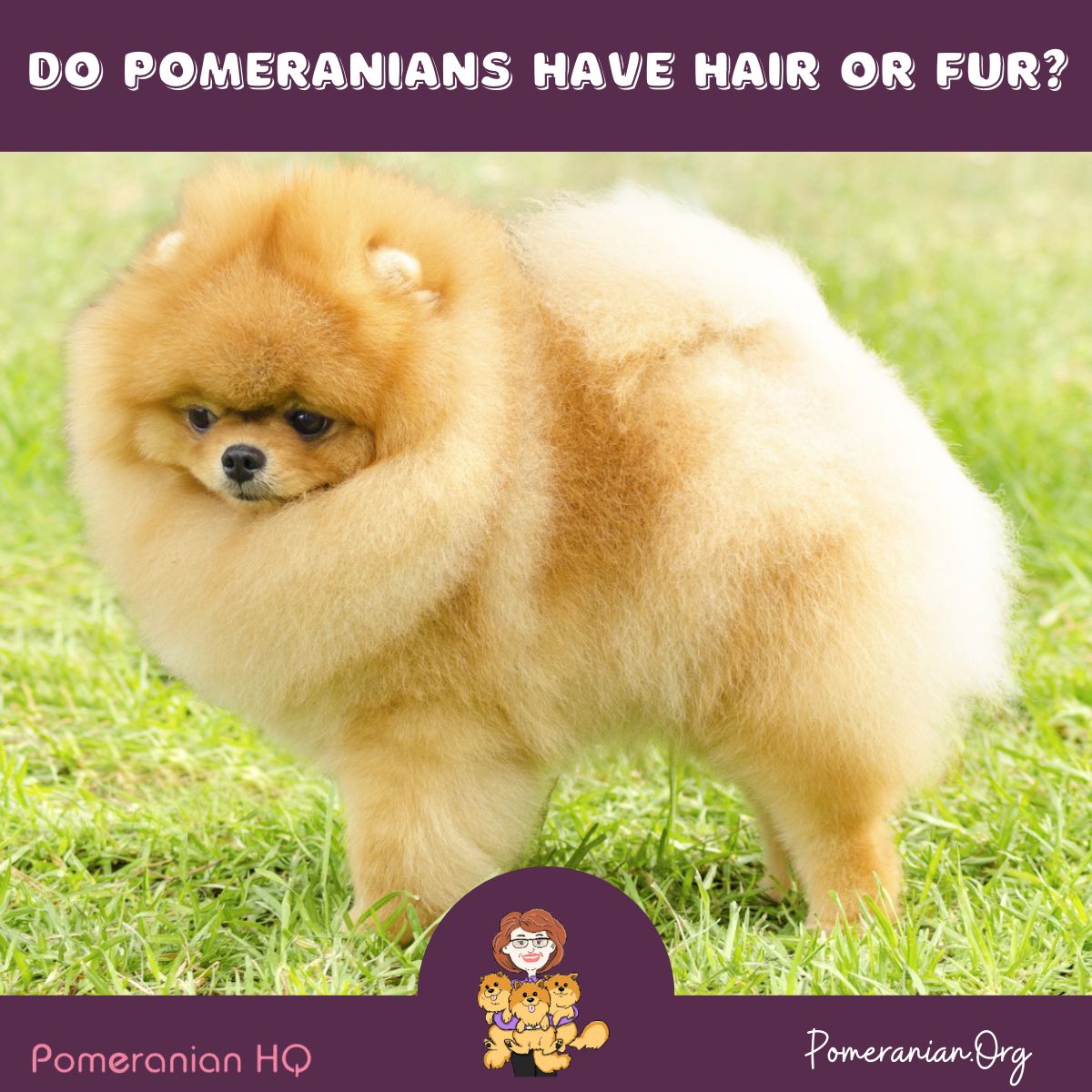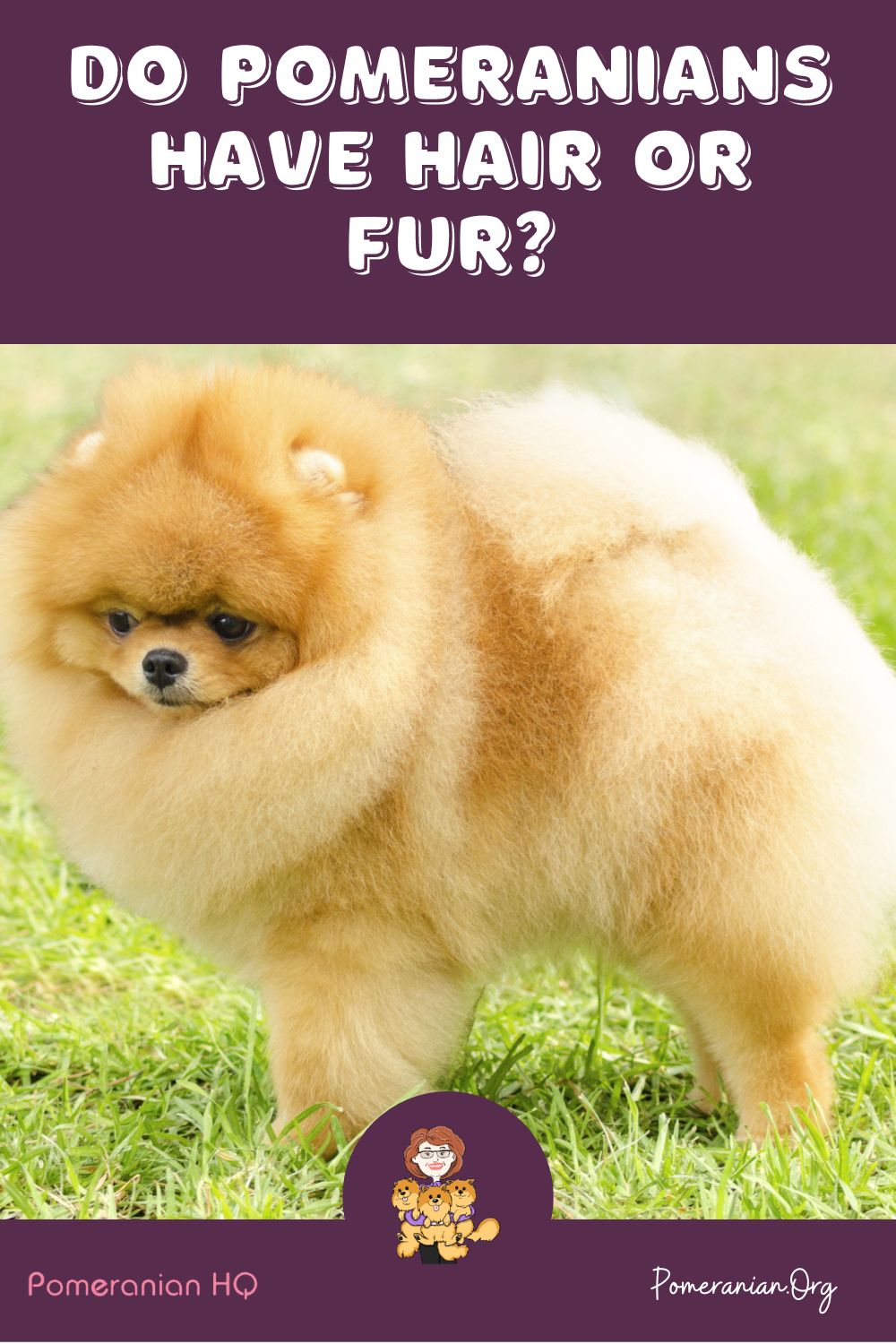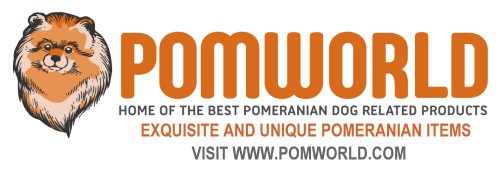Last Updated on 09/02/2024 by Dochlaggie. Post first published on April 7, 2023.
This article will answer the question do dogs have hair or fur? The coat of a Pomeranian dog is fur. Humans have some fur on their legs, arms, men’s chests, and hair on most people’s heads.
Pomeranian Dog Hair vs Dog Fur
What is the difference between hair and fur? Dog fur and hair differences are that fur will only grow to a specific length, while the hair will keep growing. Dog fur has rest periods known as telogen phases, where the hair follicles are dormant.
The dog fur growth period is known as the anagen phase. In Pomeranians and other Nordic breeds, this phase seems to be relatively short.
The dog’s genes determine the canine fur growth length, and then the follicles will rest. If the dog is stressed, the time of both phases can be affected.
Dog Hair Characteristics Explained
Dog hair is composed of a hard material named keratin, an insoluble protein with high levels of sulfur (the amino acid called cystine) and smaller amounts of other amino acids, including leucine and tyrosine.
Your hair grows from follicles just under your outer layer of skin. Each strand of hair grows from one follicle for people. Dogs can have compound and single follicles of hair.
One central follicle that creates the guard hair or primary hair can have two or even more lateral follicles, creating 5-25 secondary hairs for each follicle. The thickness or coarseness of hair in dogs can vary and is one function of the diameter of the hair.
Finer dog hairs can measure around 75 microns. Coarser dog hairs can be more than 200 microns. For a dog’s hair to be healthy, it needs to eat a nutritious, well-balanced diet consisting of proteins (particularly the ones rich in amino acids including sulfur, methionine, and tyrosine; copper, essential fatty acids, and the B group of vitamins.
Almost a third of a dog’s daily protein needs are used to renew the hair and skin. Various hormones can affect the proper growth of hair. The growth and thyroid hormone stimulates the hair follicles, while sexual hormones and corticoids slow down the growth of the follicles.
If prolactin (lactating females produce this hormone) remains high, the dog’s coat will look like a healthy, summery coat instead of a sparse, thin one.
Dog Coat Changes
If the appearance or texture of your dog’s coat changes, it’s an indication that there’s an internal problem. However, there’s no single condition or disease to which this can be attributed. An imbalance in the diet can cause brittle or dull hair, but diseases of the parasitic, renal, immune system, hepatic, or digestive sources may also cause it.
Hair changes usually occur late in the disease’s course because hair growth is slow. It’s usually a minimum of four weeks before positive effects on your dog’s hair can be seen if dietary supplements are added to the dog’s diet.
The shine of the coat of a healthy dog is mainly caused by fats secreted through sebaceous glands within the skin that act as a natural release of conditioners for hair. Despite popular belief, there are no dogs that never shed hair.
It’s just that some shed more than others. Every shaft created by a hair follicle has to die eventually and get dislodged (shedding) so it can be replaced by the new hair shaft the follicle makes.
Some dog breeds have hair that grows for longer periods before it sheds. A hair follicle has a couple of different growth phases.
Anagen is the growing phase when the follicle grows hair. Then comes the catagen phase, a short break between the resting and growing phases. The telogen phase happens when the hair follicle lies dormant.
New hair forces the old hair out of the dog’s skin. However, both fall and spring cause prolific growth of hair; not all the dog’s follicles are in one phase simultaneously, so he should never get completely bald.
Human hair is mostly in the growing stage (anagen), and this phase may last years, according to how long your genes determine your hair should be. The resting phase only lasts a few weeks. Poodles have a similar anagen phase to humans, and their hair gets so long that it must be trimmed a couple of times each year before it finally falls out.

Most other dogs have a dominant resting (telogen) phase. The anagen phase only lasts long enough for the coat to reach its genetically chosen length.
This period could be a month, a year, or sometimes even longer. Then the hair goes back to the telogen phase for an extended period. The hair in the follicle is tightly bound and can’t easily be pulled or fall out.
Will Shaved Pomeranian Hair Grow Back?
In Pomeranian and other Nordic dog breeds, it’s believed that this phase can exist for years. Shaving or clipping the coat of your Pomeranian whilst in this telogen phase is believed to be the reason behind most cases of post-clipped alopecia or Pomeranian coat funk.
Post-clipping alopecia can also be an advanced indication of hypothyroidism or other metabolic disorders.
Taking your Pomeranian to a groomer may be a risky venture. Shaving or clipping the coat very short on a double-coated dog like the Pomeranian may cause damage to the hair follicles. After visiting the Grooming Salon, the Pomeranian’s coat could grow back quickly, or it might not grow again for years, if ever.
Some Pomeranians have had very short haircuts at grooming salons and then have had success with recoating for many years; then, the hair growth suddenly stops.
Any stress that a dog endures can force hair follicles into their resting period. Stressors can include pregnancy, diseases, anesthesia, or when the dog has been given some specific medications. Approximately 2 – 3 months after the event, the shedding will be abnormal when the dog’s hair reactivates.
Pomeranian Hair Colour
The color of your dog’s coat is decided genetically. However, some environmental factors can change the color a little.
Some nutrients may change the coat’s color. Deficiencies of phenylalanine, tyrosine, methionine, cystine, and arginine have been reported as causes of hair color changes.
Protein deficiencies can affect hair growth and the quality of your dog’s hair. The American Society for Nutritional Sciences produced a report after a study in 2004 that revealed deficiencies in trace elements can also impede the quality of your dog’s hair.
A lack of zinc causes grey hair; a lack of copper causes black or brown hair to fade. Hair color can also be affected if the dog is deficient in biotin, pantothenic, nicotinic, folic acids, vitamins B2, B6, and A, iodine, and iron.
How to Improve Pomeranian Coat
Natural remedies seem to work better than typical medical methods. An immune system booster such as Echinacea can help. If the case is severe, some homeopathic remedies may also help. Some hot spots can be caused if a nerve causes an itch. This can happen if the spine or a joint is out of alignment. A chiropractor can usually fix this problem easily.
So you can see there are many possible causes for bad hair growth. This means there are also many possible remedies, and every dog should be treated as an individual, just like humans, as different remedies will help different dogs.
There’s a good overall plan of attack that usually helps, and it includes these elements:
Boosting the immune system through omega-3 fatty acids, antioxidants, and herbal remedies. Ensuring the dog’s diet is nutritious, and there are no deficiencies. Use supplements if necessary to balance it out.
Include raw meat in the diet (start with one teaspoon for every 20 pounds of weight and build to a quarter or one-third of the dog’s diet.) Meat is believed to be the best hair coat and skin “medicine” you can get.
Some natural remedies are excellent. For example – calming herbs and/or flower essences if the dog is stressed or nervous; topical herbs for faster healing and itchiness; homeopathy and acupuncture when needed.
Other Things You Can Do Yourself
Massage and use a rubber mitt on your dog’s sebaceous gland to release natural skin and hair conditioners.
Ensure your dog is brushed or combed regularly and is always clean. This will help you better monitor his overall health and build your bond at the same time. Ensure your dog’s coat is fed a good quality, nutritious food with fresh meat.
Dog Shampoos and pH
Some say dogs should only be washed with dog shampoo as human shampoo dries out his skin. Some claim the pH is different. But these are false claims.
Human shampoos have different pH levels, depending on the type. Some are acidic and are around 2.0 pH. Some are alkaline at around 9.0 pH. The majority sit at 5.5 to 6.0 pH. The shampoos for dogs also vary but are mainly more alkaline and go from 4.5 to 9.0 pH.

Human and dog skin also vary in their pH levels. Humans are around 5.5 and slightly acidic. Human hair is usually slightly more acidic at 4.5 to 5.0 pH. Dogs’ skin is generally neutral at 7.0 to 8.0 pH when slightly alkaline.
However, these figures are just averages, and people and dogs can vary greatly. In 2007, a report revealed variations in dogs seemed to change according to their breed. Labradors are 7.37 pH, and Manchester Terriers are 8.07 pH.
Other factors also affected the pH levels of the dogs, including excitement level, the gender of the dog, gonadal status, the color of the coat, where the skin is measured, and, surprisingly, what time of year it is.
The term “pH balanced” is commonly used by advertisers to sell conditioners and shampoos. Although it sounds good, it can mean different things.
The manufacturer can mean the product has been made to approximate the skin and hair’s average pH of intended users, whether dog or human. It also can mean it has a neutral pH, the same as water.
If you look at the outer surface of hair through a microscope, it looks like a terracotta roof with overlaying rows of flat cells. Pull one strand between two fingers, and it will feel smoother in one way than it would in another.
Substances with a lower pH usually harden and tighten these so-called “tiles” of your hair cuticles. This makes the hair shinier and smoother.
Diluted lemon juice or vinegar makes your hair even shinier for this reason. If there’s more alkaline, the “tiles” swell up and are dull and rough.
Whether a product will dry out hair or skin involves a lot more than merely pH. Shampoos made with soap can dry your dog’s skin and leave behind a residual trace which may cause dandruff and itchiness. Soapy products are usually alkaline.
If you have shampoo made with detergent, it rinses off better and is higher in acidity. Some products also have humectants that attract and store moisture within the shaft and/or conditioning elements that make the hair simple to comb and control static electricity.
One or more of these may affect your dog’s skin and hair annoyingly or pleasingly, depending on your dog’s skin and coat type.
Copyright. Pomeranian. Org. All rights reserved.

References and Further Reading:
[1] Denise Leo “The Pomeranian Handbook.”








